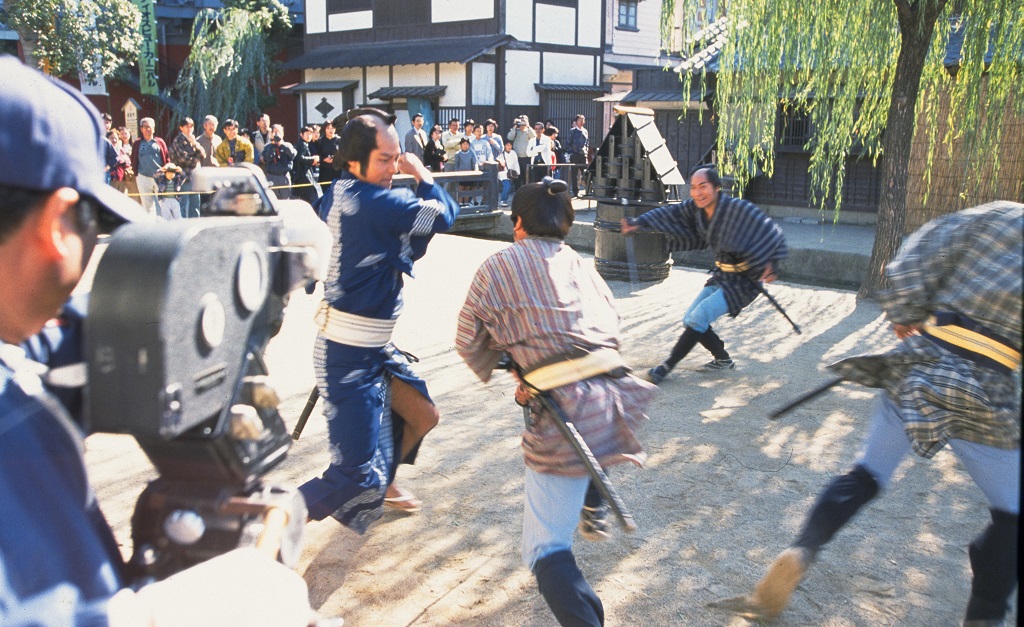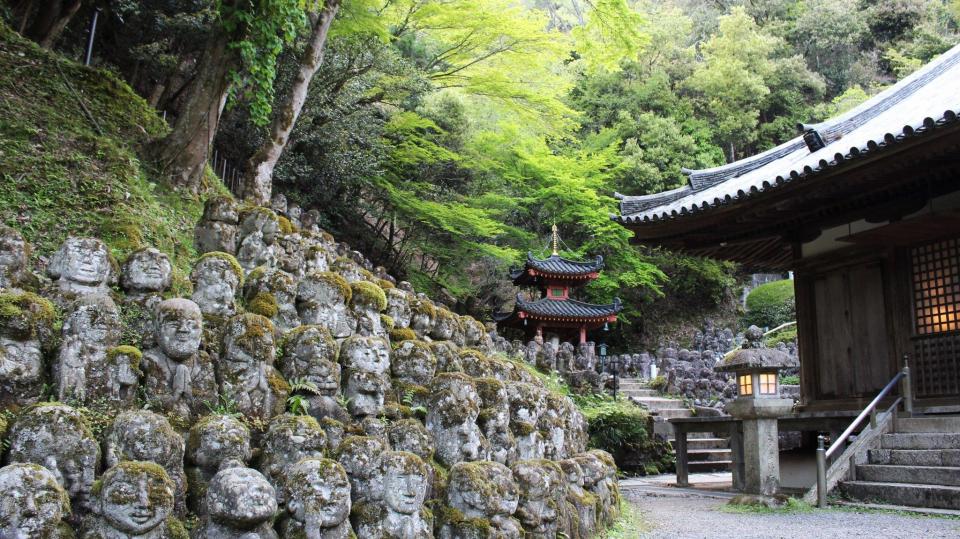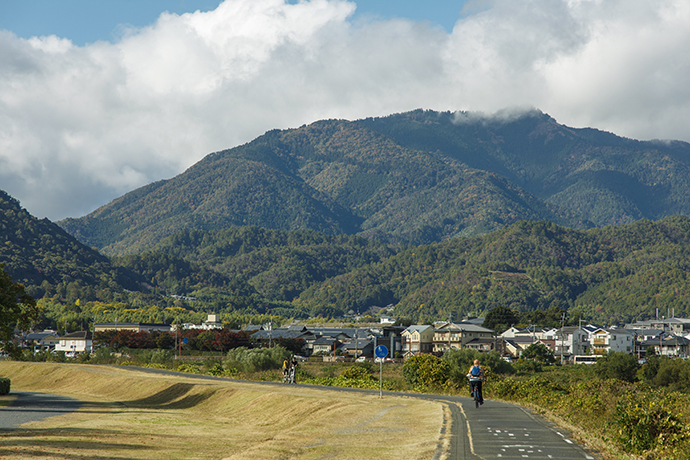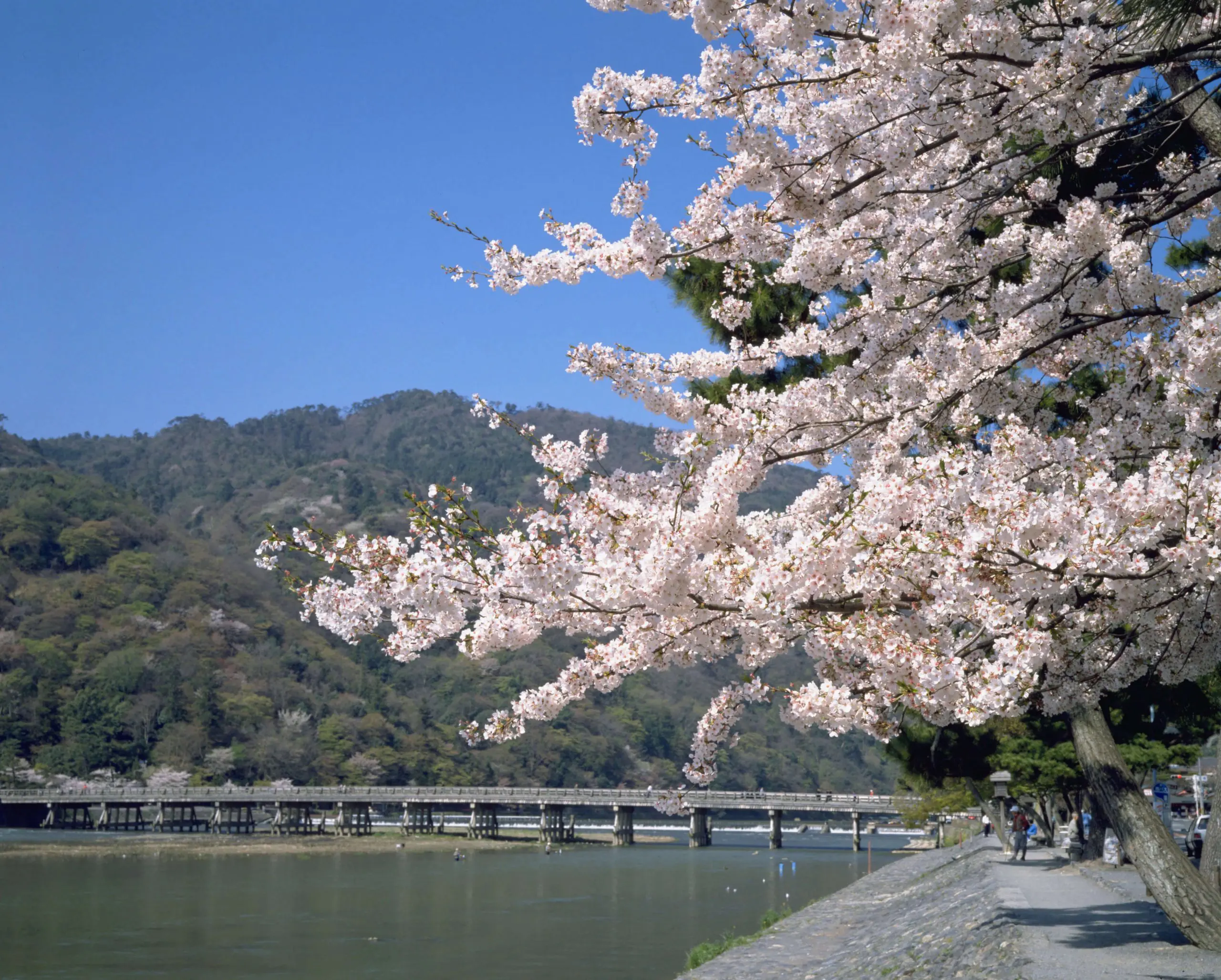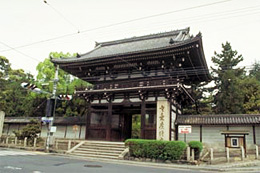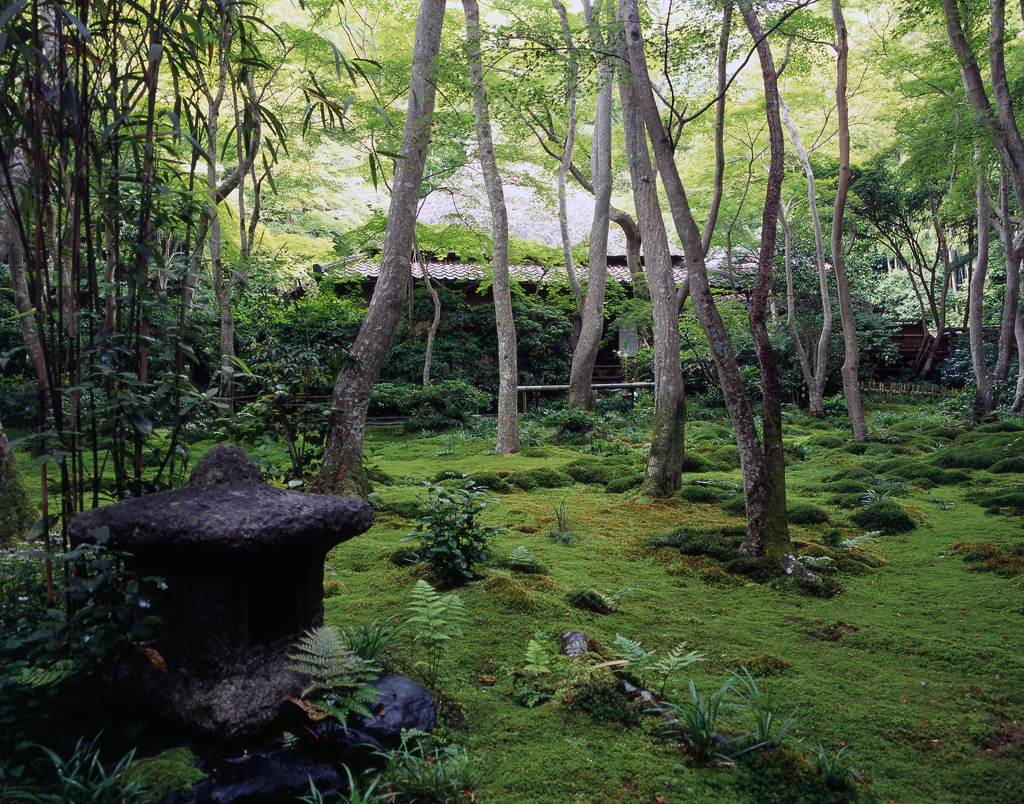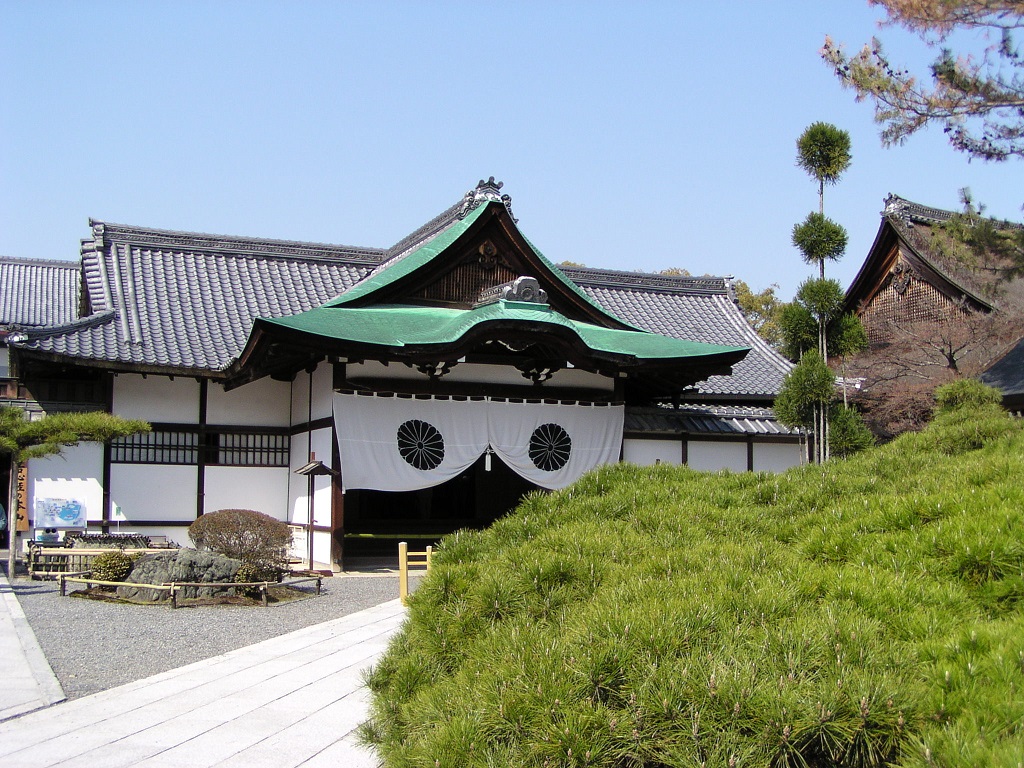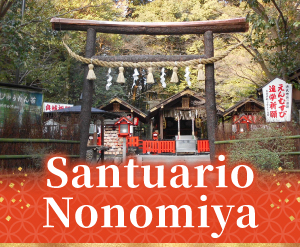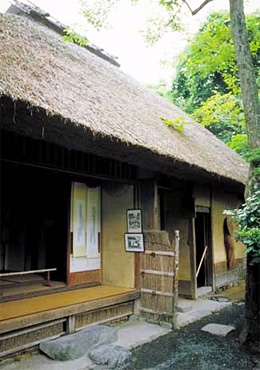
Rakushisha, la "Cabaña de los Caquis Caídos", es un lugar emblemático en el mundo de la poesía haiku. Es una sencilla ermita, con paredes de arcilla y techo de paja, en lo que antaño fue una zona remota de Kioto. Menos remota hoy en día, aún conserva una atmósfera de tranquilo aislamiento. En sus terrenos se encuentran placas de piedra con haikus grabados, mientras que poemas escritos con tinta cuelgan de las paredes interiores.
La ermita fue creada por Mukai Kyorai, discípulo principal de Matsuo Basho, el gran maestro del haiku. Kyorai se recluyó a los 27 años y, unos años después, construyó este retiro. La casa toma su nombre de una ocasión, registrada en las obras de Kyorai, en la que se despertó y descubrió que los caquis de casi cuarenta árboles de su propiedad habían caído durante una tormenta durante la noche. El propio Basho visitó Rakushisha y escribió su famoso diario, «Saga Nikki», durante su estancia allí. El diario concluye con un famoso poema que evoca la tristeza de Basho al dejar la casa de su amigo:
「五月雨や色紙へぎたる壁の跡」(samidare ya shikishi hegitaru kabe no ato)
“Lluvia de verano
En la pared hay rastros de
“tarjetas de poemas rasgadas”
En la casa se encuentran elegantes monumentos a Kyorai y Basho, así como un viejo impermeable y un sombrero de paja colgados en la pared, indicando que "el anfitrión está aquí". La tumba de Kyorai se encuentra en el exterior, en los terrenos. Mucha gente viene a Rakushisha para disfrutar de su tranquilidad y probar suerte escribiendo haiku, incluyendo a maestros contemporáneos de este arte.
Información básica
- DIRECCIÓN : 20 Hinomyojin-cho Ogurayama Saga Sakyo-ku, Kioto
